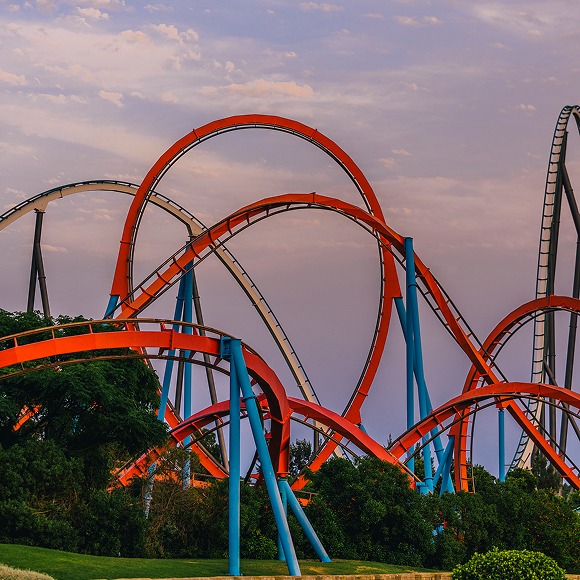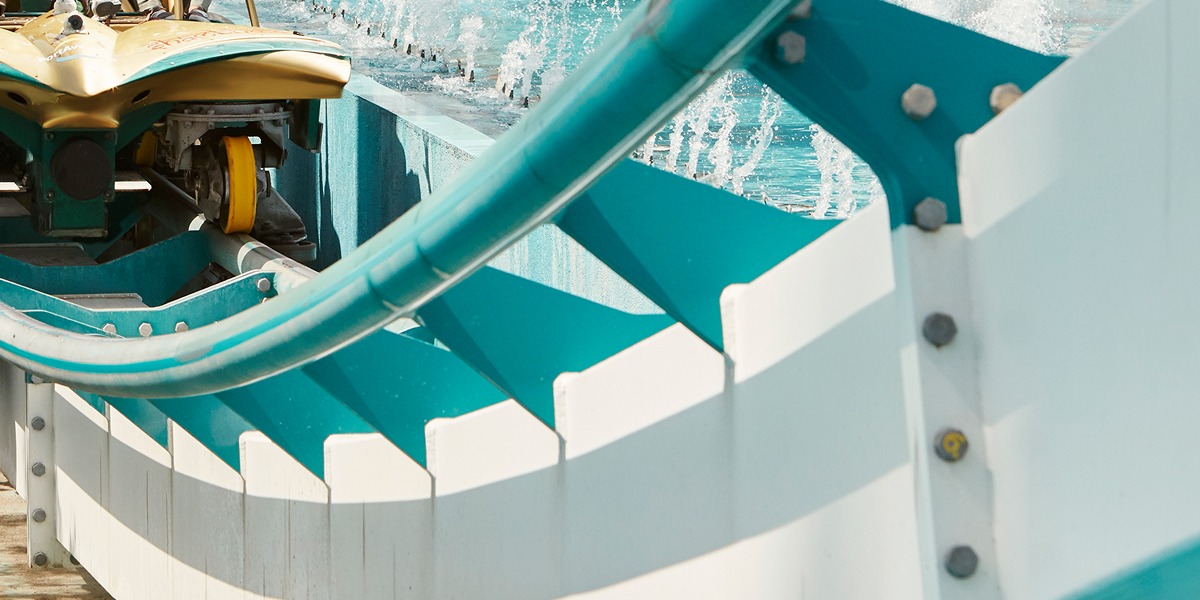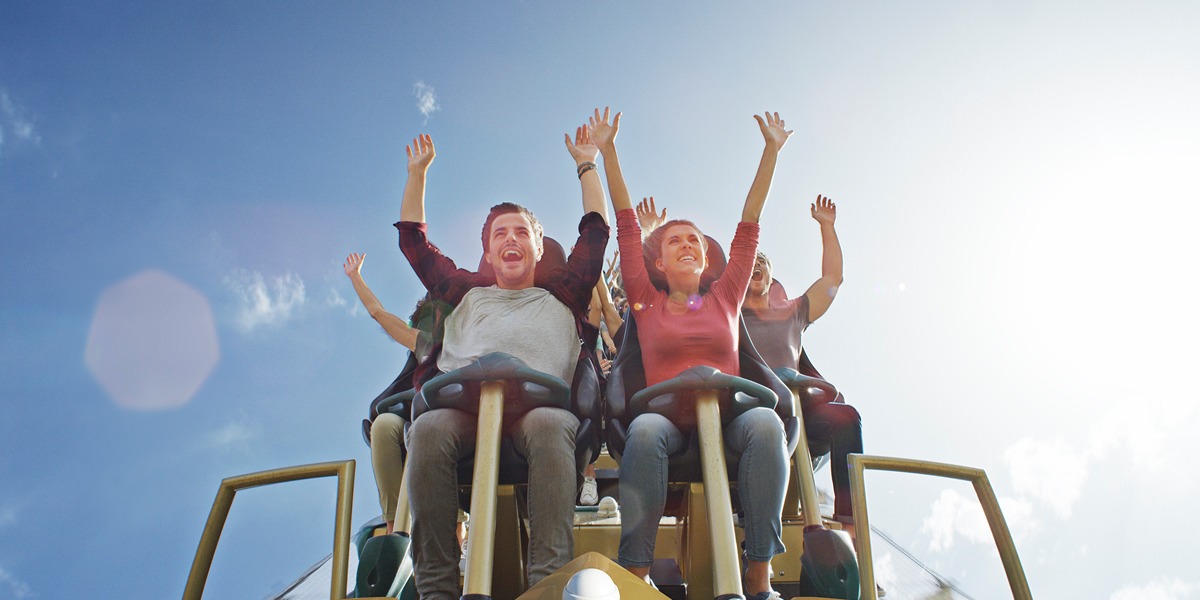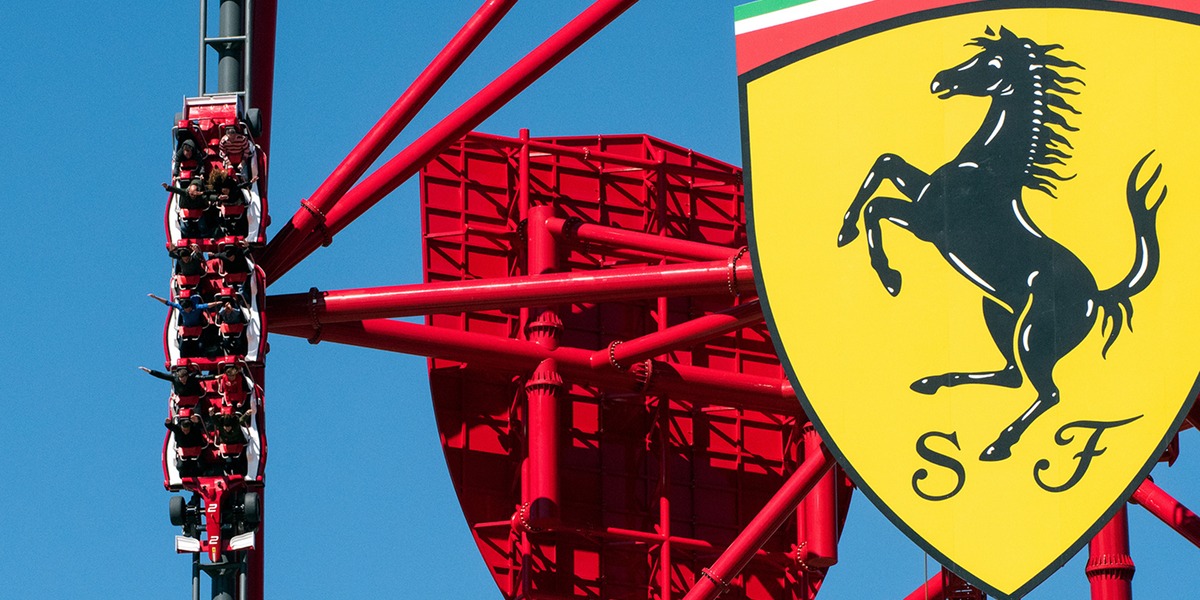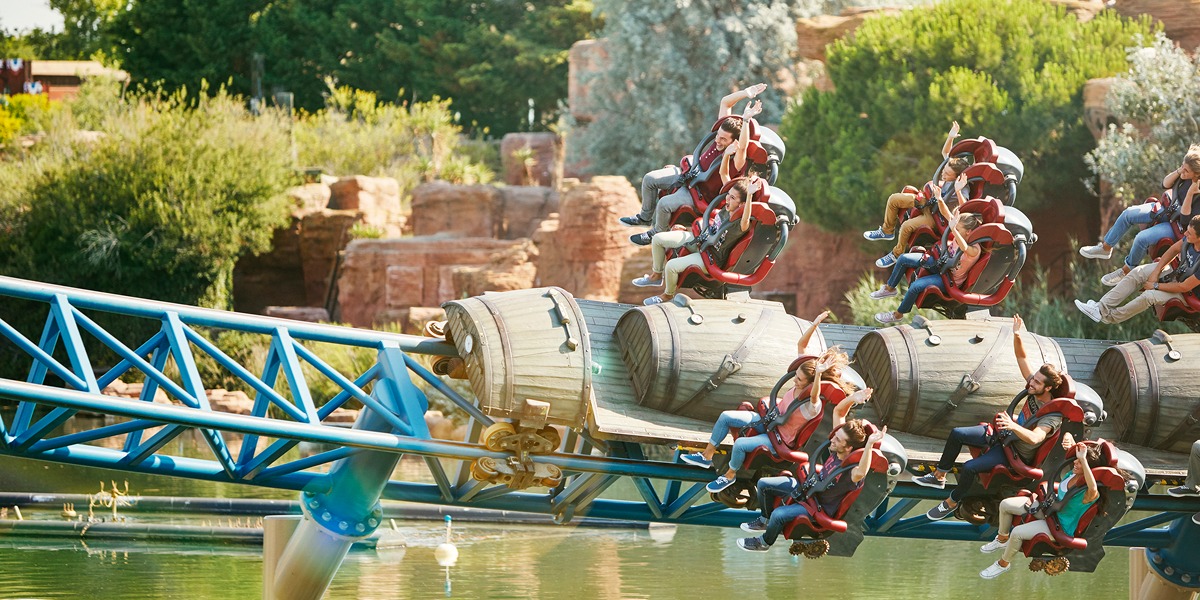What are they made of?
Wood and steel are the two most commonly-used materials in roller coaster construction. On the one hand, older roller coasters tend to be made of wood, which lends to comparatively slower rides and an unmistakeable rattling due to its irregular texture. More modern roller coasters, on the other hand, tend to incorporate steel, ensuring a faster and smoother ride.
Parts
The component parts of roller coasters include:
- Tracks: the rails that the cars run along.
- Cars: the vehicle that the passengers travel in.
- Supports: the columns and beams that sustain the tracks off the ground.
- Safety mechanisms: including the braking system and other measures specific to each type of roller coaster.
- Acceleration systems: there are different types of acceleration systems, all of which serve to drive the car forward at the beginning or maintain or increase its speed during the ride.
Origin and history: where and when were roller coasters invented?
The history of roller coasters can be traced back to 17th-century Russia, where the first ice ramps were built so that people could slide down the slopes of mountains on sledges. Later, in the 19th century, wheeled versions of these ramps were introduced in the USA and France. Over the years, these relatively simple structures evolved into what we now recognise as the modern-day roller coaster.
The first contemporary roller coaster was built in 1884 in Coney Island, New York. Since then, they have never stopped evolving!
To summarise, here’s a simple timeline of some of the biggest milestones in roller coaster history:
- In the 17th century, ice ramps were built in St Petersburg, Russia, so that people could slide down mountains on sledges.
- Decades later, wheeled cars were introduced to disused train tracks in France.
- These concepts eventually made their way to the United States, where the first modern-day roller coasters were built to be used in fairgrounds.
Types of roller coasters
Roller coasters come in all shapes and sizes. Given the speed at which technology is advancing, the possibilities of these rides are constantly increasing through a series of technological and structural improvements. In general terms, roller coasters can be categorised in the following ways:
- By material: steel, wood or a combination.
- By track type: side friction, water, bobsled, etc.
- By car type: flying, rotating, standing, seated, inverted, etc.
- By course type: open circuit, dual-track, ‘figure of 8’, wild mouse, etc.
- By height: megacoaster, hypercoaster, gigacoaster or stratacoaster. You can read all about the tallest roller coasters in the world in this post.
- By inversion type: in-line twist, vertical loop, pretzel loop, raven turns, etc.
Spain is home to a plethora of incredible roller coasters, including hypercoasters such as Shambhala, dual-tracked ‘coasters such as Stampida, and vertical loop rides such as Dragon Khan. And if you come to PortAventura World, you can ride all of them!
Read our range of articles on PortAventura World’s roller coasters to find out more!

